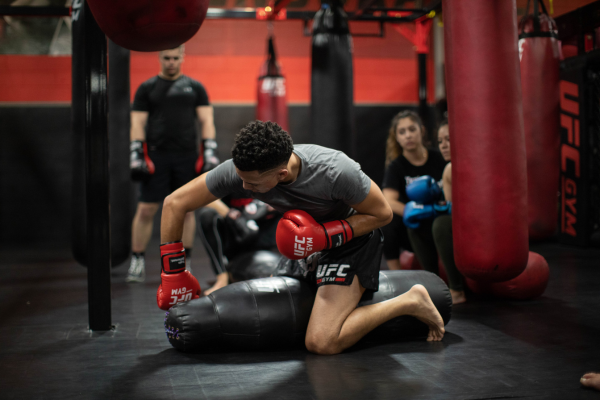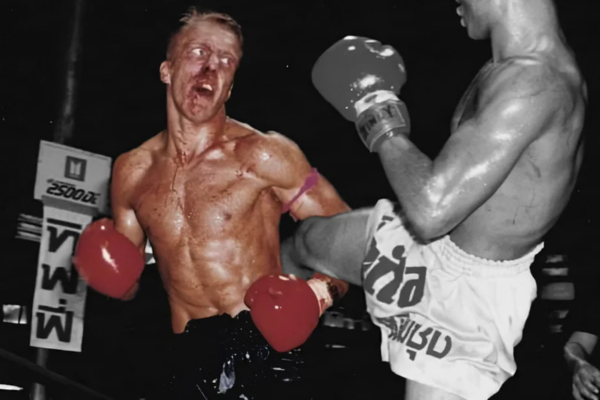Wing Chun: The secret martial art of Ip Man and Bruce Lee

Martial arts are not just about brute force, but also about technique, strategy and efficiency. Wing Chun is the perfect example of this. This Chinese martial art is designed to achieve maximum effect with minimum effort. It is all about speed, precision and clever use of energy. Grandmasters like Ip Man and Bruce Lee put Wing Chun on the map, but what makes this style so special?
What is Wing Chun?

While some martial arts are all about muscle power and brute force, Wing Chun is designed with a different premise: efficiency. The core principles are speed, relaxation and direct attack. Wing Chun teaches you not to waste energy, but to use it wisely. You neutralize an attack with minimal movement and take out an opponent immediately. No big, theatrical kicks or sweeping movements, but short, fast and direct actions.
How is Wing Chun different from other martial arts?
Compare it to boxing, karate or MMA, and you will immediately see the difference. Where other styles emphasize power and explosiveness, Wing Chun is all about compact and efficient movements. By using the 'centerline' theory, a fighter always focuses on the opponent's most vulnerable points. This ensures a fast and effective approach that even makes a physically stronger opponent stand no chance.
Frequently Asked Question: Is Wing Chun Effective for Self-Defense?
Absolutely. Wing Chun is designed for real-life confrontations and gives you a huge advantage in self-defense situations.
From Ng Mui to Ip Man
Wing Chun's roots go back to the Shaolin Temple, where the nun Ng Mui developed a style that did not rely on physical strength. Her first student, Yim Wing Chun , spread the martial art further, and the style was named after her.
Centuries later, Grandmaster Ip Man taught Wing Chun and brought the style to Hong Kong. His most famous student, Bruce Lee , used Wing Chun as the basis for his own fighting style, Jeet Kune Do. Through films and international fame, Wing Chun became one of the most respected martial arts in the world.
The core techniques of Wing Chun
Wing Chun is all about control and direct attacks along the 'centerline', the imaginary line that runs through the middle of the body. By always focusing on this zone, every movement is purposeful and effective. You minimize unnecessary movements and use every opportunity to strike quickly.
Wing Chun is known for Chi Sao , or 'sticky hands'. This is a training method where two fighters maintain constant contact to develop reflexes and control. In addition, the ' chain punch ' technique is one of the deadliest weapons: a series of quick, short punches that give an opponent no time to react.
Basic moves for beginners:
- Chain punches
- Chi Sao training
- Low kicks for balance disruption
The benefits of Wing Chun
Wing Chun helps you improve your reflexes, reaction time and balance. The technique forces you to fight in a relaxed but alert position, which allows you to waste less energy and act faster.
In addition to the physical benefits, Wing Chun also helps you become mentally stronger. It requires patience, perseverance and strategic insight. You learn to stay calm under pressure and make efficient decisions, both in combat and in everyday life.
Quote: “The fastest way to success is the shortest distance between action and reaction.” – Ip Man
Training Wing Chun, where do you start?
You can practice Wing Chun at home with videos and training dummies, but training under an experienced instructor makes a big difference. In a school you will learn how to execute techniques correctly and improve your reflexes with sparring partners.
What do you need to get started?
- Wing Chun Gloves
- Wooden training dummy ( Mook Yan Jong )
- Comfortable training clothes
Wing Chun in the Modern World

Wing Chun is designed for real confrontation. Instead of long combinations or spectacular kicks, this style focuses on short, explosive movements that will instantly disable an opponent. This makes it ideal for self-defense, regardless of your physical build.
Although Wing Chun is not widely used in MMA in its traditional form , many fighters have incorporated techniques from the style. Names like Anderson Silva and Tony Ferguson incorporate Wing Chun elements into their fights, particularly hand techniques and close-quarters control.
What do you think about Wing Chun?
Do you think Wing Chun is effective in a real combat situation? Let us know in the comments.
Wing Chun is a martial art that revolves around technique, speed and strategy. Whether you are just starting out or already have experience, mastering this style requires perseverance and the right training. Do you want to learn more about martial arts and effective self-defense techniques? At Fightstyle we regularly share valuable insights, training advice and background stories from the martial arts world.
 Nederlands
Nederlands English
English Deutsch
Deutsch Français
Français


Heel interessant artikel! 🙏 Ik vind het tof hoe je uitlegt dat Wing Chun draait om efficiëntie en slimme bewegingen in plaats van brute kracht. Vooral het stuk over Chi Sao klinkt fascinerend. Heb je misschien tips voor beginners die nog twijfelen of ze beter met Wing Chun thuis kunnen starten of meteen naar een school/instructeur moeten gaan?
Leave a comment